Patients’ perceptions of health care quality and experience have fallen in the three years since 2020, based on a July 2023 update from The Beryl Institute – Ipsos Px Pulse study.

Start with health care quality, which 58% of U.S. adult patients ranked as “very good or good” in June 2020. The percent of health consumers evaluating their healthcare quality as very good or good fell to 41% of people in June 2023, an erosion of 17 percentage points, shown in the first chart.
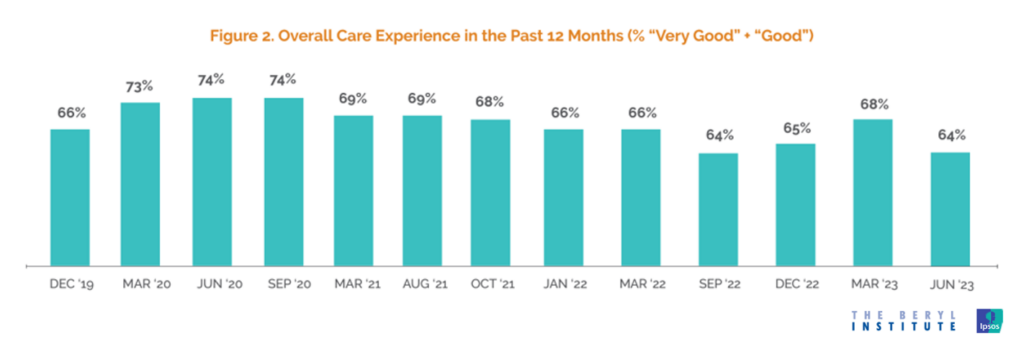
Next, consider patients’ ratings on their care experience, for which 74% of folks said was “very good or good” in June 2020. Three years later, that proportion was 64%, falling 10 percentage points. 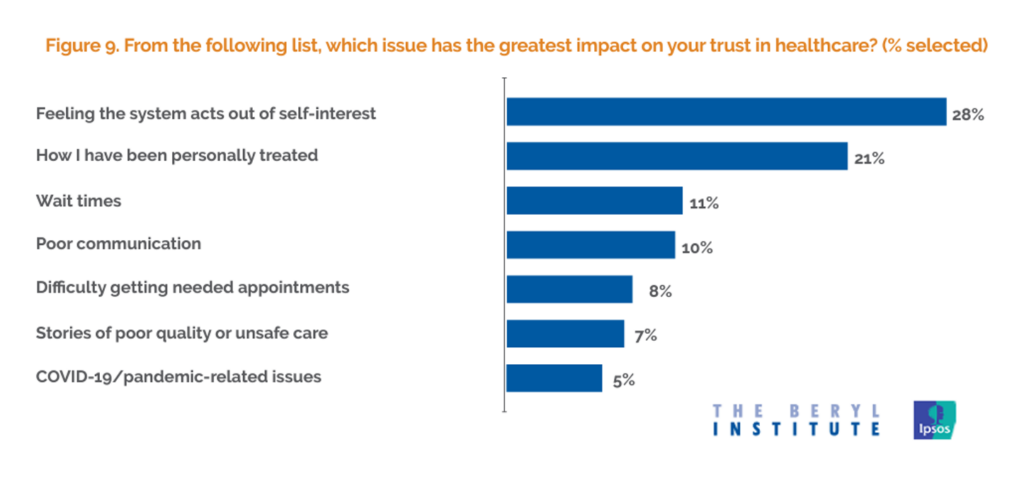
Why care about peoples’ perceptions of quality and experience in health care?
Start with the perceptions and where they come from. Key to eroding trust among patients is a feeling that the health care system acts out of its self-interest and not that as a patient advocate. How people feel personally treated is part of the negative experience that erodes peoples’ trust in health care, followed by wait times and poor communication, exhibited in the bar chart.
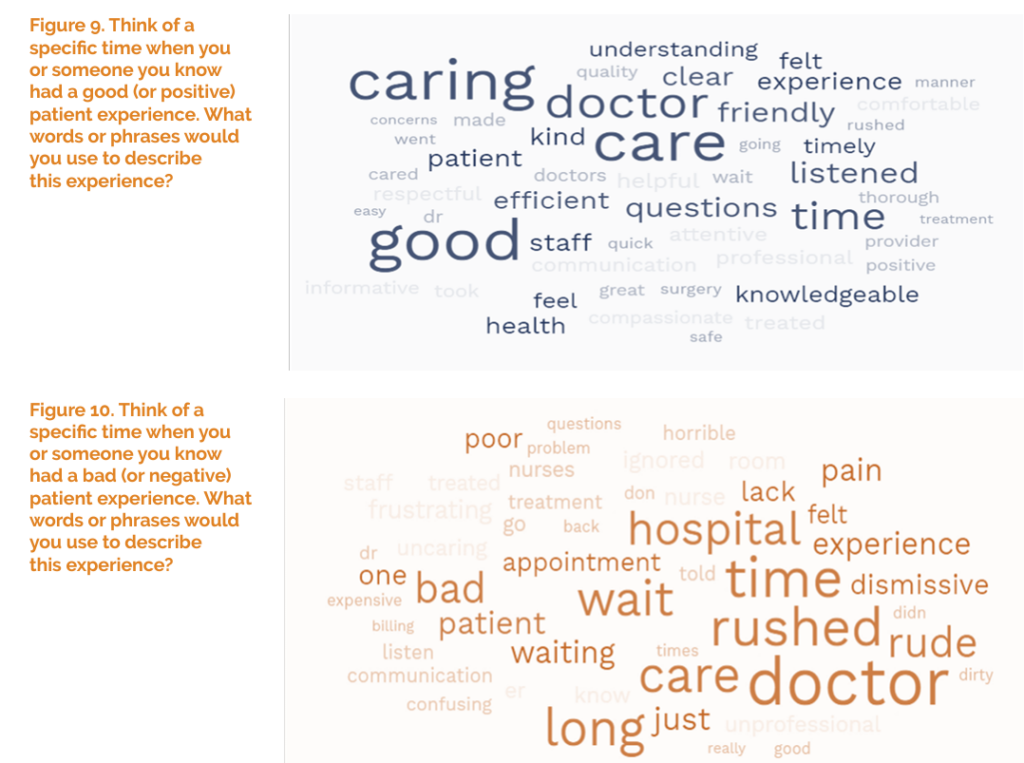
The Beryl Institute and Ipsos previously explored the issue of trust in health care in the November 2022 Px Pulse research. The next two charts come out of the November 2022 report.
So what do patients say good looks like in terms of experience? That’s shown in the top half of the chart, in dark blue print.
It’s a lot about communication: the biggest words in the word cloud are “good,” “caring,” “care,” “doctor,” and “time.”
To the south of the chart, consider the negative phrases patients use to describe a bad experience. These were “rushed,” “long,” “hospital,” “wait,” and “dismissive.”
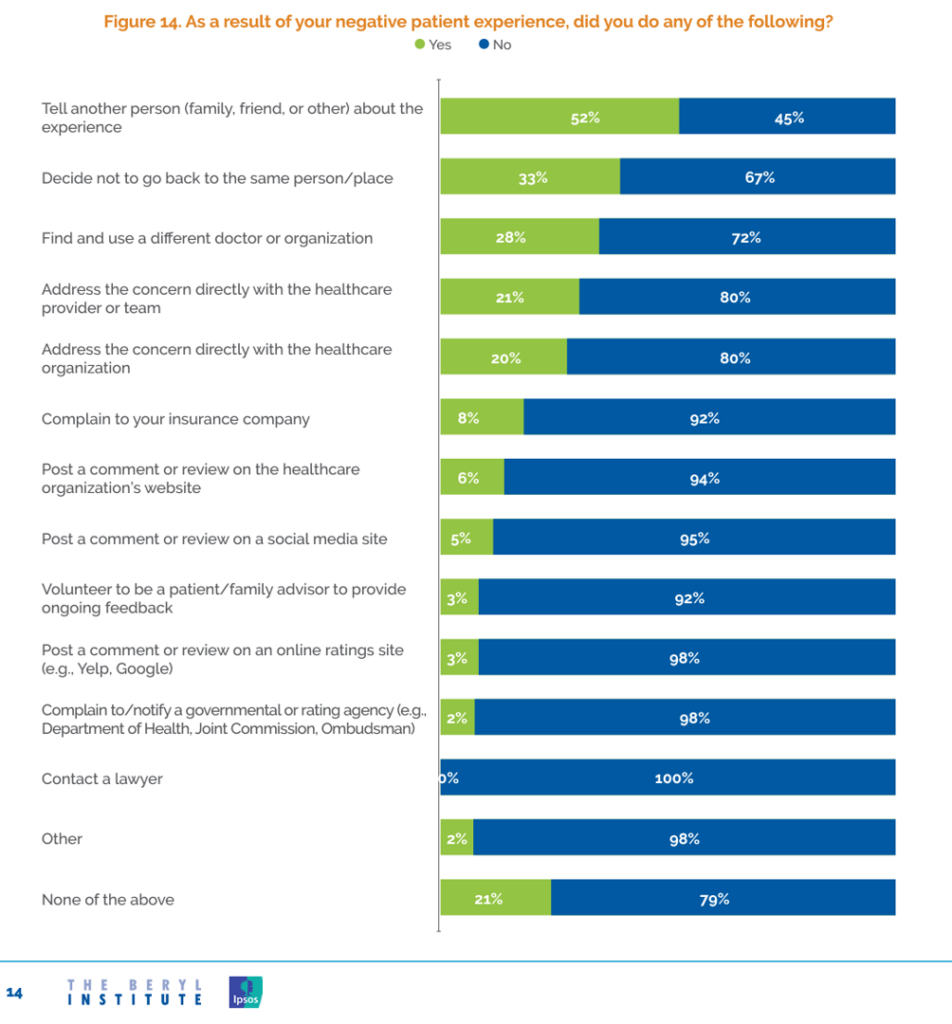
Now we can answer this question about why we should care about trust and perceptions of quality and experience with the health care system. This is chart #2 from the November 2022 report, when Beryl Institute and Ipsos previously explored the issue of trust.
What patients do following a negative experience can hurt a health provider or plan’s business: the most common response among health consumers with negative health care experiences is to tell another person — family, friend, colleague — about the experience (among 3 in 5 patients) and one-third of patients decided not to return to the same provider or place. Another one-fourth of patients found and used a different doctor or organization.
Only about one in four people with negative experiences followed up with the organization or individual to directly address the concern.
In this way, patients are behaving like consumers in walking away from care and communicating their displeasure with people they love and trust in everyday life.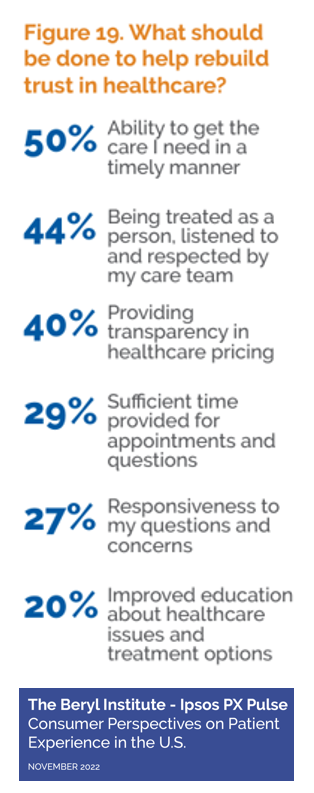
Health Populi’s Hot Points: What’s a health provider or other health-consumer facing touchpoint to do to bolster trust through experience and quality?
The last table lists the top six responses health consumers identified to help rebuild trust in health care. From the top…
- Assure the ability for me to get the health care I need on a timely basis
- Treat me like a person, listened to and respected by my care team
- Provide transparency in health care pricing
- Take sufficient time with me during my appointment, allowing questions
- Be responsive for my questions and concerns
- Improve education about my health care issues and treatment options.
These are critical issues in the eyes and minds, and wallets, of patients-as-healthcare-consumers.
This chart from the research provides additional key context for understanding the patient-as-payor in 2023.
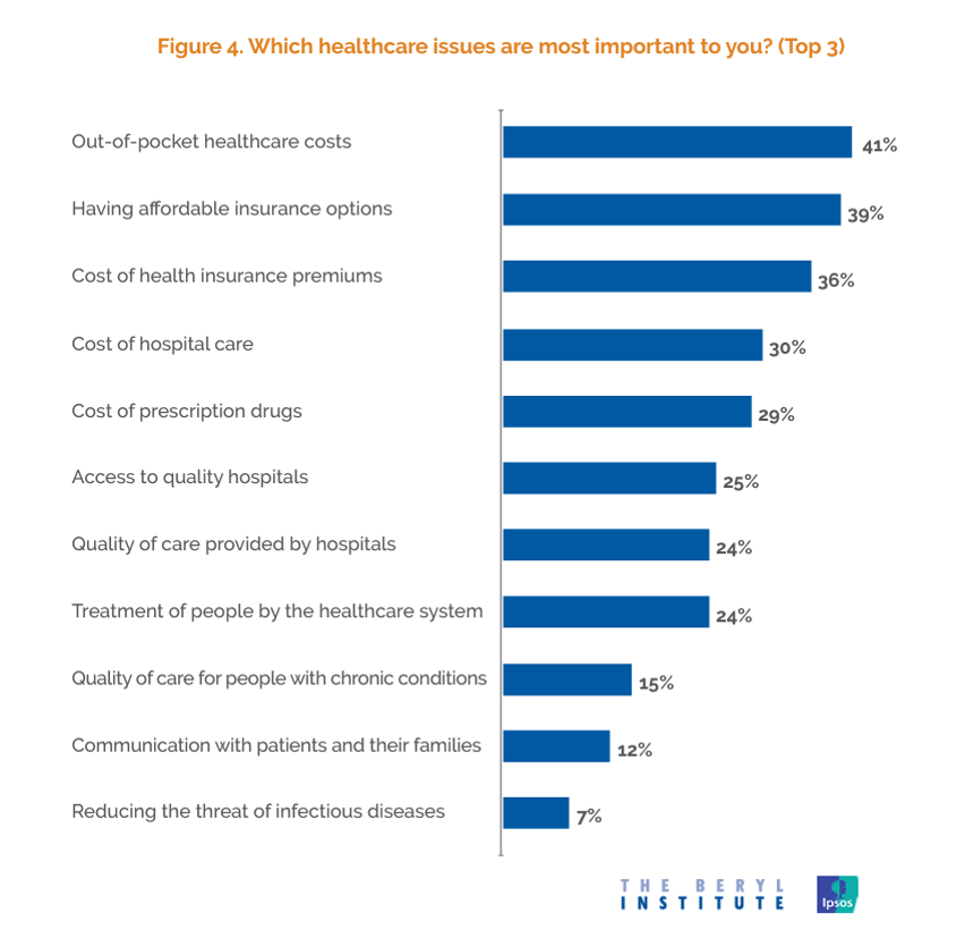
Among all the healthcare issues most important to the U.S. patient in 2023, the top five have to do with cost: cost of out-of-pocket care, affordable insurance, the cost of health plan premiums, the cost of hospital care, and the cost of prescription medicines.
Quality and communication fall lower than cost here, as both have eroded over time. The cost of health care, now approaching $1 in every $5 household dollars for the average U.S. family, is a kitchen-table, everyday issue.
One of the key headlines to the November 2022 research was to “take your (the patient’s) pain seriously,” and “treat you with courtesy and respect.”
The financial pain of health care is now part of the consumer experience. Addressing that stressor in the overall patient experience, from the parking lot to care inside an organization and, increasingly, supporting the patient at-home and closer-to-home, will be key to re-building trust, loyalty, and driving outcomes for individuals and their communities.


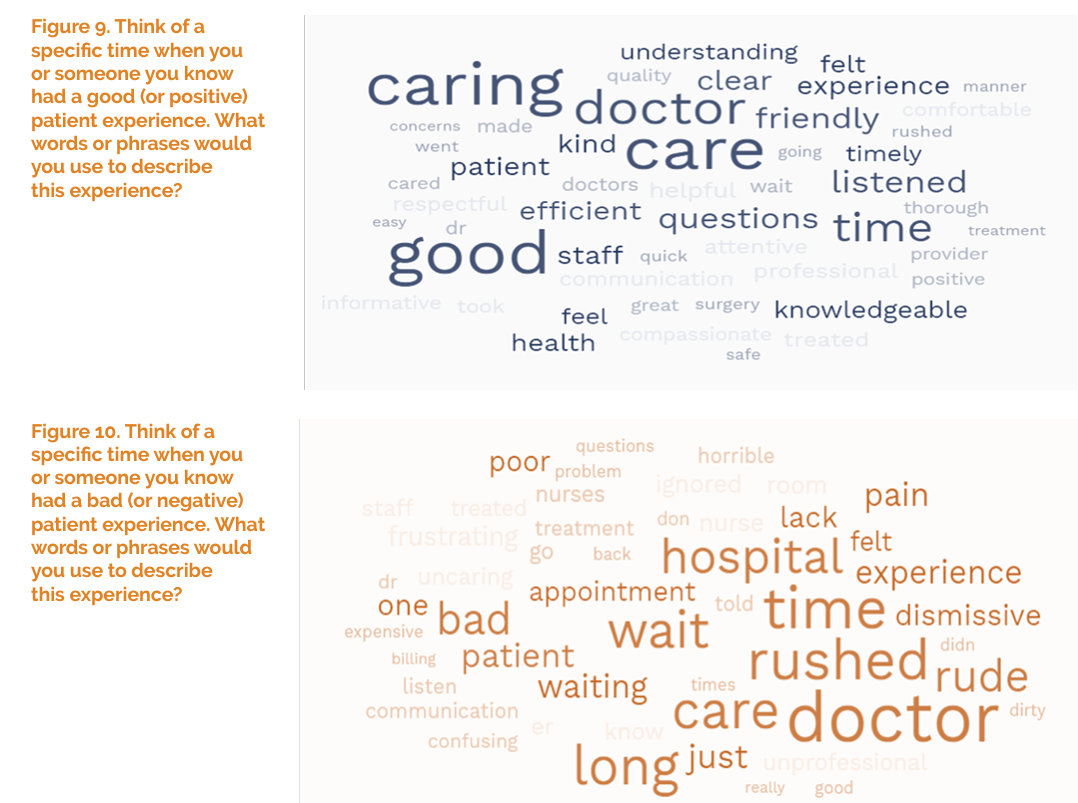



 Grateful to Gregg Malkary for inviting me to join his podcast
Grateful to Gregg Malkary for inviting me to join his podcast  This conversation with Lynn Hanessian, chief strategist at Edelman, rings truer in today's context than on the day we recorded it. We're
This conversation with Lynn Hanessian, chief strategist at Edelman, rings truer in today's context than on the day we recorded it. We're